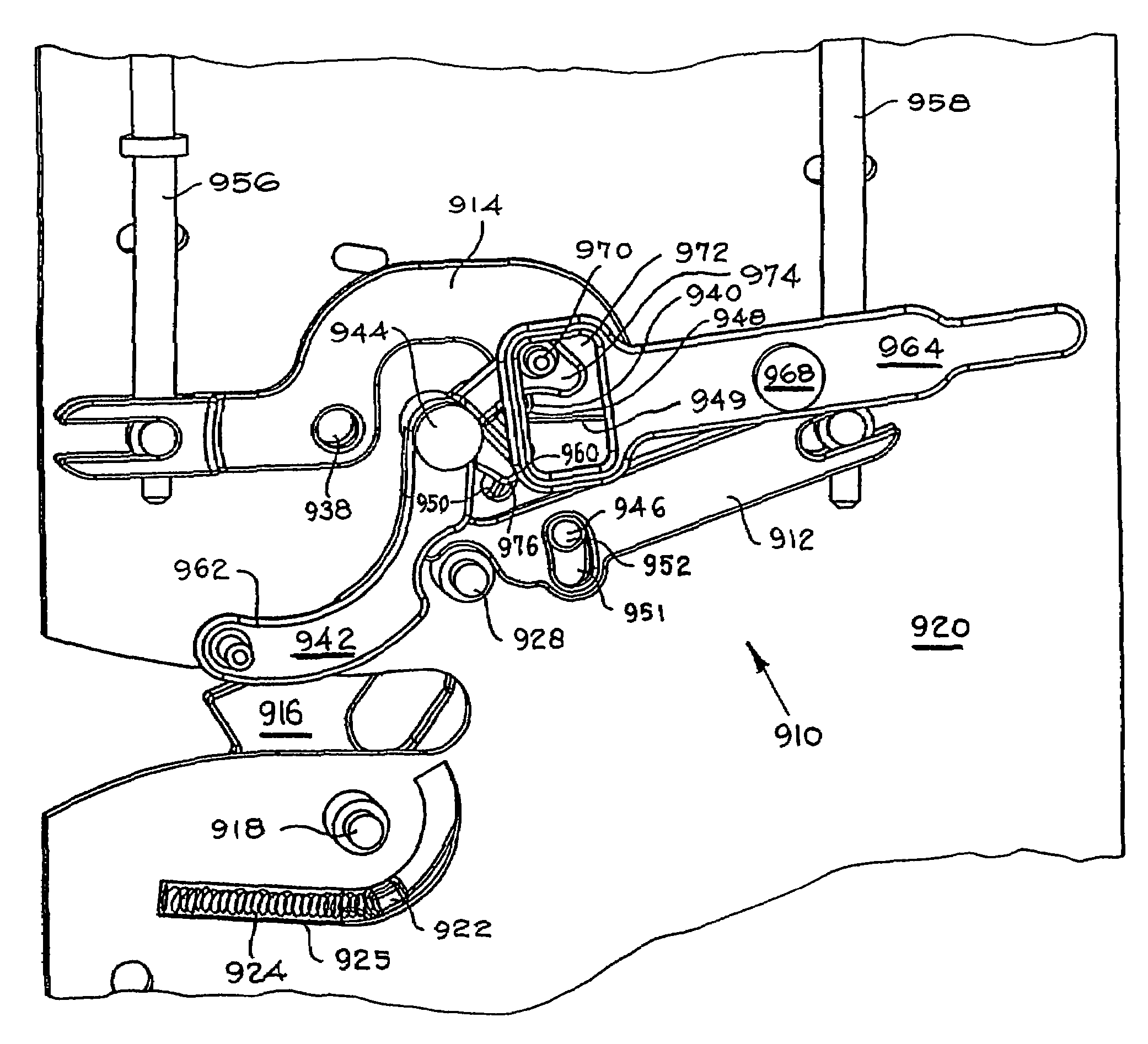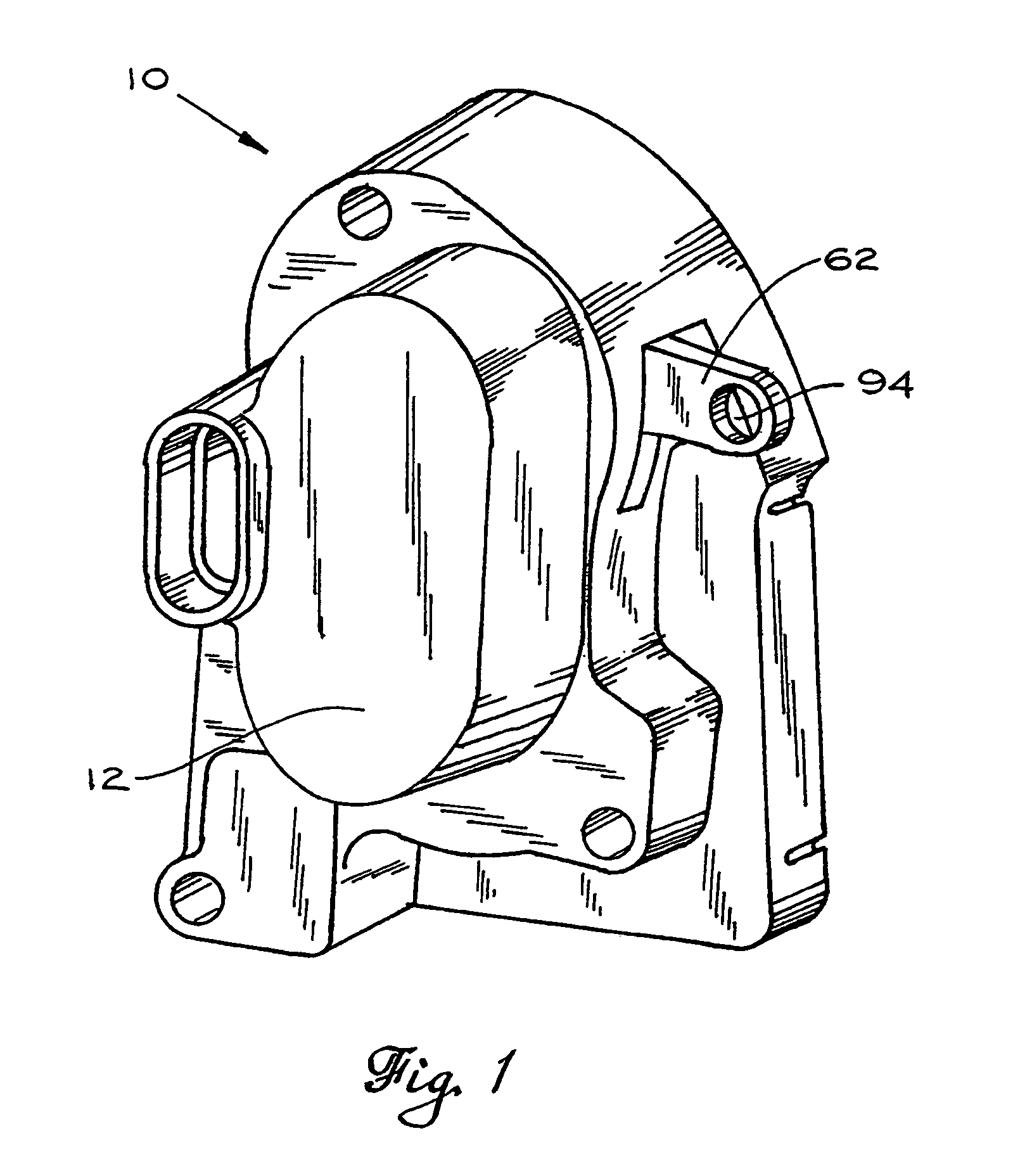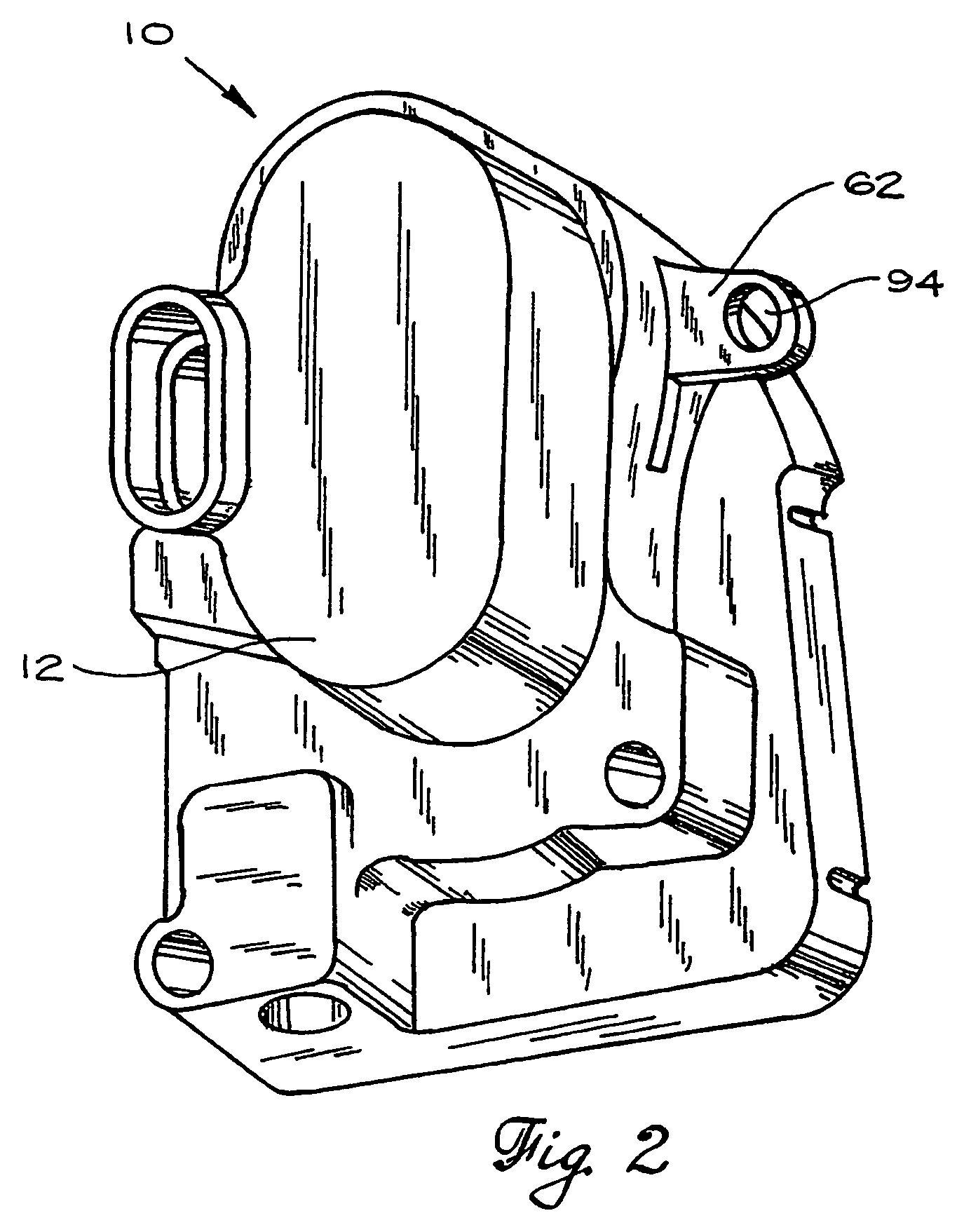Latch apparatus and method
a technology of latching and latching elements, applied in the direction of passenger lock actuation, carpet fasteners, lock applications, etc., can solve the problem that the control element does not impart motion (or sufficient motion) to the latch element or the latching mechanism for unlatching the door
- Summary
- Abstract
- Description
- Claims
- Application Information
AI Technical Summary
Benefits of technology
Problems solved by technology
Method used
Image
Examples
third embodiment
[0170]By way of example only, one such alternative arrangement is illustrated in FIGS. 32-34. The latch assembly shown in FIGS. 32-34 is substantially the same as that shown in FIGS. 17-31, but with the exceptions described hereinafter. Reference numerals in this third embodiment are increased with respect to those in the second preferred embodiment to the 400 and 500 number series.
[0171]As can be seen in FIG. 32, the upper control element 452 and the lower control element 453 are each connected to the pawl 454 by a respective link 556, 558. The links 556, 558 can take virtually any shape and can be connected to the control elements 452, 453 and to the pawl 454 in any conventional manner which allows relative movement of the control elements 452, 453 and the pawl 454 (i.e., by welding, brazing, gluing, fastening with fasteners, and the like). Preferably however, the links 556, 558 are U-shaped wires or rods bent to fit within suitably sized apertures in the control elements 452, 453...
fourth embodiment
[0221]Like the other embodiments of the present invention described earlier, the present invention preferably employs one or more springs and stop elements to place the various elements in the latch assembly in desired at-rest positions. Preferably, the upper control element 652 has two at-rest positions defined by at least one spring 772 and at least one stop 774. These two at-rest positions are preferably the locked and unlocked positions of the upper control element 652 shown in FIGS. 41 and 42, respectively. The spring 772 is preferably connected to one of the guidance posts 743 in any conventional manner and extends to a position alongside the path of the upper control element lever end 664. When the upper control element 652 is fully actuated by the linking element 730 to unlock the latch assembly 610, the upper control element 652 preferably moves past an elbow 780 in the spring 772. This elbow 780 provides some degree of force upon the upper control element 652 to bias the u...
embodiment 610
[0249]For purposes of illustration, operation of a preferred embodiment of the actuator 800 will now be described with reference to its application in the fourth preferred latch assembly embodiment 610. It should first be noted, however, that the latch assembly 610 described above need not employ this type of actuator. In this case, the lower actuator 688 is preferably a two-stage actuator 800 as described above (although either or both actuators 668, 688 could be such an actuator in alternative embodiments). Specifically, the lower control element 653 is the element to be controlled 816, the lower pin 686 is the pin 812 of the actuator 800, and the lower pin plate 706 is the body of the holding element 808. The track 818, within which the lower pin plate 706 is movable, is shown as a groove in the interior wall of the front cover 612, and has a width sized to slidably receive the edges of the lower pin plate 706. As such, the lower pin plate 706 is movable through the track 818 in ...
PUM
 Login to View More
Login to View More Abstract
Description
Claims
Application Information
 Login to View More
Login to View More - R&D
- Intellectual Property
- Life Sciences
- Materials
- Tech Scout
- Unparalleled Data Quality
- Higher Quality Content
- 60% Fewer Hallucinations
Browse by: Latest US Patents, China's latest patents, Technical Efficacy Thesaurus, Application Domain, Technology Topic, Popular Technical Reports.
© 2025 PatSnap. All rights reserved.Legal|Privacy policy|Modern Slavery Act Transparency Statement|Sitemap|About US| Contact US: help@patsnap.com



